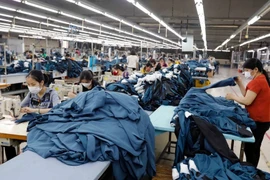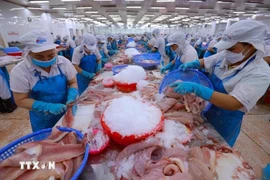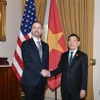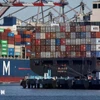Hanoi (VNA) – Industry leaders are crafting diversification strategies and calling for calm as Vietnam’s textile and footwear exports to the US potentially face new tariffs.
The Trump administration has announced a 10% tariff on all imports into the North American country while higher rates could be imposed on major trading partners, including a substantial 46% tariff on Vietnamese goods, with the textile and footwear sector among the hardest hit.
According to Chairman of the Vietnam Textile and Apparel Association (VITAS) Vu Duc Giang, of Vietnam's total textile and garment exports worth over 44 billion USD in 2024, the US market accounted for 40%. If the US implements the announced 46% reciprocal tariff, Vietnamese textile and garment products would face average duties between 61-62% when entering the market, given the current 15-16%. This would also negatively affect US consumers amid rising inflation.
Various tariff rates have been imposed on Vietnamese apparel exports to the US, with some products at 0%, others at 7% or 12%, while items like jackets face a 27% duty. Vietnam doesn't have a free trade agreement with the US so these tariff foundations already exist, Giang noted. He said the Government is implementing multiple solutions and continuing negotiations to determine how the tariff rates will be applied going forward.
The association advises businesses to remain calm while awaiting the outcome of bilateral Government negotiations, he stated.
Giang further emphasised that the US represents a crucial export market for Vietnamese textiles. Brands and buyers never "put all eggs in one basket" and they have considered Vietnam a strategic and long-term market. Therefore, despite upcoming tariff changes, he remains confident that textile exports in 2025 will face challenges but won't experience a catastrophic shock.
He laid stress on the significance of diversifying markets as well as exports, avoiding over-reliance on any single market. He particularly underscored that Vietnamese businesses must invest more in research and development, expand markets, and implement technological innovations in production to reduce costs and create distinctive products. This approach will enable businesses to compete fairly without fearing risks from tariff policies and non-tariff barriers from major trading partners in the future.
Meanwhile, Chairman of the Board of Directors of Viet Thang Jean Co., Ltd Pham Van Viet said that US tariffs on Vietnamese goods are something businesses have anticipated and planned for, but the potential 46% rate comes as a surprise. He suggested Vietnam reduce import tariffs and increase purchases of US goods such as automobiles, electronic equipment, aircraft, agricultural products and food, stating the moves will not significantly impact domestic production.
Under tariff pressure, Vietnamese businesses could accelerate investments in technology, digital transformation, and green production to meet higher international market requirements. This will enhance the competitiveness and added value of Vietnamese goods in the long run.
General Director of the Vietnam National Textile and Garment Group (Vinatex) Cao Huu Hieu said to date, the US has not announced specific tariff rates for individual product lines or sectors, including textiles and garments. As an immediate solution, he urged businesses not to panic, emphasising that maintaining calm is essential during difficult times.
According to Hieu, Vinatex is encouraging businesses to diversify markets and material sources to avoid excessive dependence on China, while strictly controlling product origins. The textile industry could increase the use of US cotton to reduce the trade imbalance.
In this context, manufacturers must collaborate with customers to find optimal solutions that maintain orders, preserve jobs, and ensure profits. However, it's clear that increased tariffs will inevitably affect consumer demand.
Vice President and General Secretary of the Vietnam Leather Footwear and Handbag Industry Phan Thi Thanh Xuan stated that the US imposing a 46% tariff on imports from Vietnam presents an extremely significant challenge for the footwear industry in the coming period. The sector accounts for 40% of total export turnover to the US market, valued at over 10 billion USD, so high duties will certainly slow export growth. With rising costs, businesses will need solutions to maintain production and further optimise manufacturing processes to offset increased tax expenses in the near future.
Vietnam has signed 16 free trade agreements with countries, including the EU-Vietnam Free Trade Agreement and the Comprehensive and Progressive Agreement for Trans-Pacific Partnership, she said, suggesting enterprises continue diversifying export markets and capitalise on those with free trade agreements.
Besides, she described the challenges as opportunities for companies to restructure production processes, increase labour efficiency, and reduce input costs. Xuan also recommended that ministries and agencies implement better policies, particularly administrative procedure reforms, tax and customs improvements, faster tax refunds, and streamlined customs procedures to create favourable conditions for businesses to reduce production costs./.
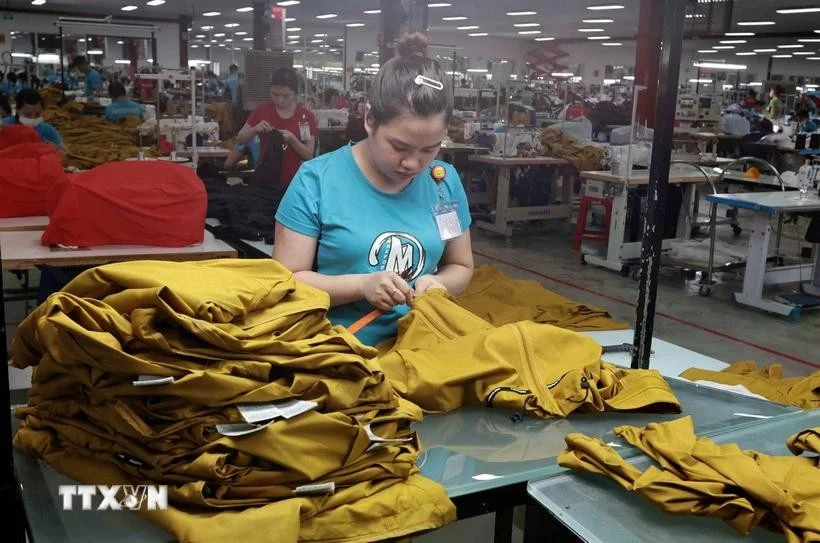
See more

Italy's Liguria region eyes stronger economic cooperation with Vietnam
An Asia-Vietnam business dialogue in Italian city of Genoa featured expert insights into regional trade dynamics, real-world business case studies, and analysis of Vietnam’s fast-evolving key sectors — from manufacturing to technological innovation — amid shifting global trends.
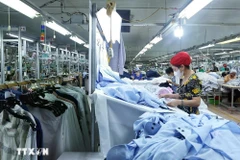
Gov’t negotiating team for trade talks with US set up
The Government negotiating team on trade issues with the US is headed by Minister of Industry and Trade Nguyen Hong Dien.

50 years of national reunification: Xuyen Moc thrives as tourism hub in southeastern region
In November last year, Loc An wharf was recognised as a special national historical site, highlighting its importance during Vietnam's resistance war against American forces.
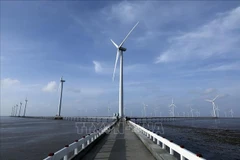
Vietnam developing wind turbine blades that align with weather conditions
Vietnam is focusing on the development and application of green energy technologies, including the technology surrounding wind turbine blades and solar panel production, as it wants to fully tap its advantages in geography and climate to develop renewable energy.

Seminar discusses how to successfully restructure banking sector
Experts explored the root causes behind both the successes and failures of Vietnam’s bank restructuring efforts, while proposing practical measures to enhance their effectiveness going forward at a seminar in Ho Chi Minh City on April 11.

Vietnam, China enhance business connectivity
In the first quarter of 2025, bilateral trade between Vietnam and China reached 51.2 billion USD, up 17.5% year-on-year, with expectations for continued growth throughout the year.

Latin American media hail Vietnam’s breakthrough in US trade talks
According to the Latin American outlet, the most outstanding achievement in the recent intensive negotiation days was Vietnam’s special task force convincing the US side to agree to begin negotiations on a bilateral trade agreement, an issue Washington had previously avoided on numerous occasions.

Vietnam, Brazil promote cooperation potential
During his visit from April 7-10, the Ambassador held meetings with the Government of Sao Paulo State, the Federation of Industries of the State of Sao Paulo (FIESP), and Friboi -a subsidiary of the JBS Group- to explore opportunities to further strengthen bilateral trade and investment, with a focus on Sao Paulo.
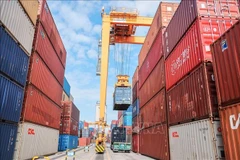
Ministry calls for stricter control over imported materials amid tighter origin rules
Document No. 2515/BCT-XNK highlights the fast-changing and unpredictable landscape of global trade, particularly in light of the US's ongoing tariff policies affecting many countries, including Vietnam.
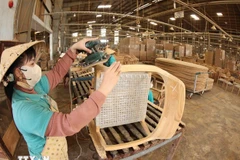
Vietnam’s forestry sector ramps up competitiveness to meet export targets
Vietnam’s forestry industry is setting its sights on reaching an ambitious export target of USD 18 billion in 2025.

Vietnam taps e-commerce boom to supercharge export growth
In recent years, the number of Vietnamese enterprises engaging in online exports has climbed sharply, mirroring the country’s fast-paced digital transformation.
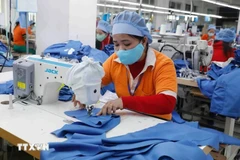
Vietnam’s labour force grows by half a million annually: report
The labour force aged 15 and above reached 52.9 million people in Quarter 1, showing a decrease of 230,700 people compared to the previous quarter but an increase of 532,000 people year-over-year.

VinFast launches VF 6 EV with free charging in Philippines
Available in Eco and Plus variants, the VF 6 is priced at 1,419,000 PHP and 1,610,000 PHP, respectively (24,700–28,100 USD), with deliveries of the Eco version set to begin in May 2025.
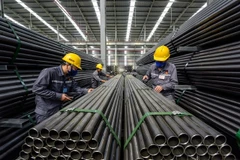
Vietnam Trade Office warns of trade diversion, affecting Vietnamese exports to EU
Being cautious and proactive at this time will help Vietnam protect its exports to the EU and preserve the international reputation of Vietnamese goods amid an increasingly volatile global trade landscape.
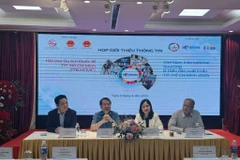
Vietnam to host international supply chain connectivity event
According to the organisers, more than 300 international purchasing delegations from 60 countries and territories will attend the sourcing fair, supported by over 60 Vietnamese trade offices worldwide.

Representatives from over 30 countries, territories to join HCM City travel expo
The ITE HCMC 2025 will feature 16 main activities, including trade connections, forums, conferences, and workshops.

Vinfast delivers 12,100 EVs in March, leads Vietnam market
March marked the official launch of pre-orders for VinFast’s Green mini EV series, distributed via GSM and authorised dealerships nationwide. Within just 72 hours, GSM received an impressive 45,813 pre-orders for the Minio Green, Herio Green, Nerio Green, and Limo Green models, setting a new domestic market record.

Vietnam’s auto sales hit high gear, surge 47% in March
One standout trend was the sharp rise in completely built-up (CBU) imports, which saw sales climb 60% to 16,863 units. Meanwhile, domestically assembled vehicles also posted a gain of 35%, with 14,887 units delivered to customers.

Hue calls for investment in the Chan May – Lang Co Economic Zone
Covering an area of more than 27,100 hectares, the zone has five main functional areas: a port area, an industrial area, a non-tariff area, an urban area, and a tourist site.
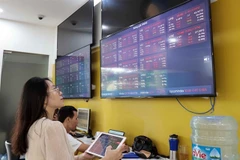
New accounts reach six-month high in Q1 as domestic investors thrive
Individual domestic investors contributed significantly, adding 157,001 new accounts, the highest figure in six months.
